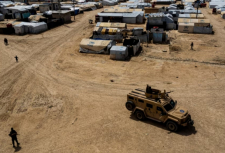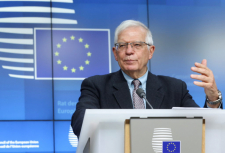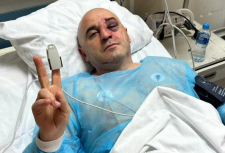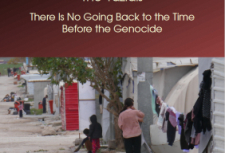The Yazidis Of Iraq
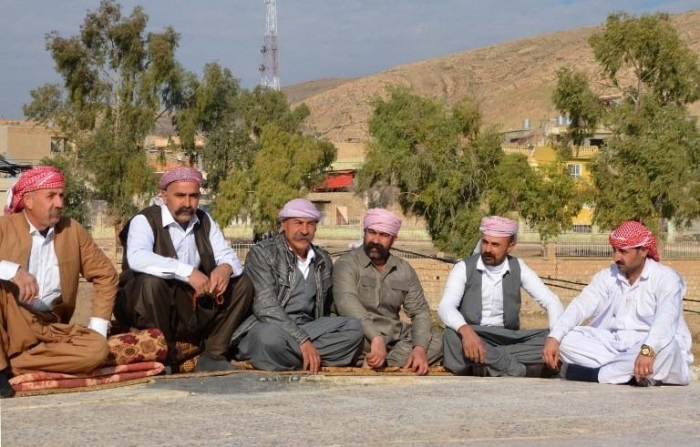
A. POBEDONOSTSEVА (Saint Petersburg)
One of the little-studied religious communities in the Middle East up to the present time are Yezidis. This is mainly due to their strict prohibition of non-disclosure of intra-community information to Gentiles, the main purpose of which is to preserve the safety of community members.
Actually, this very mystery was behind our desire to go on a journey to the Kurds-Yezidis of Iraq and see with our own eyes how this ancient people live. There are different opinions about the origin of yazidism. The majority of scholars see its roots in the pre-Zoroastrian cults. Despite some common features with Zoroastrianism (the cult of fire), the attitude to good and evil in Zoroastrianism and yazidism are different. There is no personification of evil in yazidism, and the epithets given by representatives of other religions to the "evil spirit" are not accepted by Yazidis. Thus, they consider it a great sin to call one of the angels "cursed", "fallen", etc. Such an attitude to the "fallen angel" is found in some Sufi interpretations. Although, according to Muslim legend, when God created the first man Adam and ordered all creatures to worship him, the angels fulfilled the command, and Iblis* refused: "I am created from fire, and he from clay." After which he was expelled from Paradise. Yezidis believe in one Creator God and seven angels, at the head of which, according to ancient texts, God put Malaktaus. According to the sacred texts, no one can go against God, because nothing can happen without his will. Yazidi society is based on the caste principle. There are 2 castes of the clergy sheikhs and peers, as well as the caste of lay mrida. Every Yazidi is born in a particular caste, and marriage between people of three caste system of the Yezidis is prohibited. The duties of sheikhs, peers and mrids are unchangeable and inherited, but mrids can become preachers, interpreters of sacred texts, as well as monks. The territory of residence of the Yezidi Kurds in Iraq is still difficult to access for field research, due to the recent military operations, the unstable situation in the country as a whole. One of a kind Shrine of the Yazidis is a temple Lalesh, which is close to the city Shahan (Arab. Ayn Sifni), where the second largest Yazidi community in Iraq is concentrated. In addition to the Yazidis, the population in Sheikhan is represented by Muslim Kurds and Assyrians,Christians.
At the entrance to the Sheikhan dome shape of one of the mosques reminded "lobed" structure of the lalesh domes, which may indicate the interpenetration of architectural traditions in the architecture of religious buildings located in the Sheikhan. Here is a building ezdikhana the Yezidi house in which to gather for religious ceremonies and marriage, as well as to resolve controversial issues arising in the community. The religious leader of the Yezidi Kurds is the World of Tahsin-Bek, in whose hands secular power is also concentrated. Due to certain differences in the religious Outlook over the centuries, the relationship between the Yezidi Kurds and the Muslim Kurds at times did not develop in the most peaceful way. On the territory of the Ottoman Empire, which covered almost all areas of residence of the Yezidi Kurds, in the census of the population, the Yazidis sometimes recorded themselves as Muslims in order to avoid additional taxes imposed on non-Muslims. Residents of Sheikhan rarely see foreigners and especially Europeans, as well as residents of other cities in Northern Iraq, so they were surprised to contemplate our nonsmoker nature.
The situation was similar to the stories of some travelers who visited Iran a few years ago, and then the locals, not knowing how to react, gathered in a group, considered visitors until someone came bright idea to invite travelers to visit. In Shahane to our "invasion" has responded about as well, because this distant town unnecessarily, apparently, for a long time no one came. Not very good idea how to get to Lalesh, we were stopped in the truest sense of the word by a local resident.
Guessing about the purpose of our visit, they came to us and began to explain how to get to Shehadi, where the tomb of the reformer of Yazidism and mystic scholar Sheikh ADI, whose name and named the location of the temple complex. The Kurdish hospitality, which has become a household name, was manifested in a simple explanation of the road. He asked for paper and a pen and drew a rough map of the way. The road to Shehadi ran among the picturesque green hills, from time to time hiding between the mountains surrounding the temple.
Tags: #yazidisinfo #yezidi #yazidi
The Yazidis Of Iraq

A. POBEDONOSTSEVА (Saint Petersburg)
One of the little-studied religious communities in the Middle East up to the present time are Yezidis. This is mainly due to their strict prohibition of non-disclosure of intra-community information to Gentiles, the main purpose of which is to preserve the safety of community members.
Actually, this very mystery was behind our desire to go on a journey to the Kurds-Yezidis of Iraq and see with our own eyes how this ancient people live. There are different opinions about the origin of yazidism. The majority of scholars see its roots in the pre-Zoroastrian cults. Despite some common features with Zoroastrianism (the cult of fire), the attitude to good and evil in Zoroastrianism and yazidism are different. There is no personification of evil in yazidism, and the epithets given by representatives of other religions to the "evil spirit" are not accepted by Yazidis. Thus, they consider it a great sin to call one of the angels "cursed", "fallen", etc. Such an attitude to the "fallen angel" is found in some Sufi interpretations. Although, according to Muslim legend, when God created the first man Adam and ordered all creatures to worship him, the angels fulfilled the command, and Iblis* refused: "I am created from fire, and he from clay." After which he was expelled from Paradise. Yezidis believe in one Creator God and seven angels, at the head of which, according to ancient texts, God put Malaktaus. According to the sacred texts, no one can go against God, because nothing can happen without his will. Yazidi society is based on the caste principle. There are 2 castes of the clergy sheikhs and peers, as well as the caste of lay mrida. Every Yazidi is born in a particular caste, and marriage between people of three caste system of the Yezidis is prohibited. The duties of sheikhs, peers and mrids are unchangeable and inherited, but mrids can become preachers, interpreters of sacred texts, as well as monks. The territory of residence of the Yezidi Kurds in Iraq is still difficult to access for field research, due to the recent military operations, the unstable situation in the country as a whole. One of a kind Shrine of the Yazidis is a temple Lalesh, which is close to the city Shahan (Arab. Ayn Sifni), where the second largest Yazidi community in Iraq is concentrated. In addition to the Yazidis, the population in Sheikhan is represented by Muslim Kurds and Assyrians,Christians.
At the entrance to the Sheikhan dome shape of one of the mosques reminded "lobed" structure of the lalesh domes, which may indicate the interpenetration of architectural traditions in the architecture of religious buildings located in the Sheikhan. Here is a building ezdikhana the Yezidi house in which to gather for religious ceremonies and marriage, as well as to resolve controversial issues arising in the community. The religious leader of the Yezidi Kurds is the World of Tahsin-Bek, in whose hands secular power is also concentrated. Due to certain differences in the religious Outlook over the centuries, the relationship between the Yezidi Kurds and the Muslim Kurds at times did not develop in the most peaceful way. On the territory of the Ottoman Empire, which covered almost all areas of residence of the Yezidi Kurds, in the census of the population, the Yazidis sometimes recorded themselves as Muslims in order to avoid additional taxes imposed on non-Muslims. Residents of Sheikhan rarely see foreigners and especially Europeans, as well as residents of other cities in Northern Iraq, so they were surprised to contemplate our nonsmoker nature.
The situation was similar to the stories of some travelers who visited Iran a few years ago, and then the locals, not knowing how to react, gathered in a group, considered visitors until someone came bright idea to invite travelers to visit. In Shahane to our "invasion" has responded about as well, because this distant town unnecessarily, apparently, for a long time no one came. Not very good idea how to get to Lalesh, we were stopped in the truest sense of the word by a local resident.
Guessing about the purpose of our visit, they came to us and began to explain how to get to Shehadi, where the tomb of the reformer of Yazidism and mystic scholar Sheikh ADI, whose name and named the location of the temple complex. The Kurdish hospitality, which has become a household name, was manifested in a simple explanation of the road. He asked for paper and a pen and drew a rough map of the way. The road to Shehadi ran among the picturesque green hills, from time to time hiding between the mountains surrounding the temple.
Tags: #yazidisinfo #yezidi #yazidi
